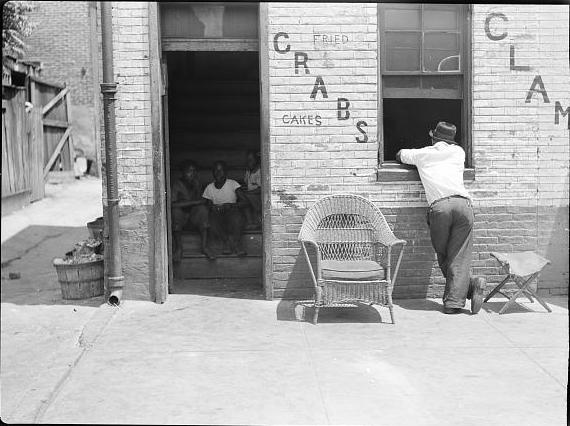As we close out November with stuffed bellies and eyes toward impending December holidays, The Metropole’s editors would be remiss not to draw attention to one of the blog’s strongest months since its founding in 2017. With a new UHA board, filled with recent arrivals, readying to assume responsibilities in January, we profiled four incoming members: Llana Barber, James Wolfinger, Emily Callaci, and Dorothee Brantz. Get to know your new board!
December 1st also brought to an end to our most prolific Metro of the Month, Baltimore. In November, The Metropole published, counting our usual overview, eight pieces of scholarship on Charm City. We’ve provided a round up of each below. Delve into the history of the iconic Mid-Atlantic metropolis!

Mobs, Monuments, and Charm: A Baltimore Bibliography: From current 21st century popular culture attentions to the city (The Corner, The Wire, Beach House, Future Islands) to the story of Charm City’s unfortunately very influential residential segregation laws of the early 1910s, our annual overview/bibliography provides a bite sized bite of the larger whole.

Longtime resident and Johns Hopkins University political scientist Matt Crenson, author of 2017’s Baltimore: A Political History, reflects on the city’s struggle with race relations. Equal parts academic analysis and memoir, Crenson juxtaposes his lived experience with the historical reality of the city.

The Brotherhood of Liberty and Baltimore’s Place in the Black Freedom Struggle:
Virginia Tech historian Dennis Patrick Halpin draws upon his forthcoming work on the city, A Brotherhood of Liberty: Black Reconstruction and its Legacies in Baltimore, 1865-1920, to discusses the history of Baltimore’s first black-led civil rights organization (and one of the first nationally) and the struggles it encountered to deliver the rights of citizenship to Charm City’s African American community.

The Drug War in Baltimore: The Failure of the “Kingpin” Strategy in Charm City:
Walsh University historian Will Cooley delivers an account of 1970s and 1980s law enforcement drug policies in Baltimore. Unsurprisingly, the “Kingpin” approach failed to fully address the tragedy of the drug trade in the city. Cooley writes deft historical analysis with a journalistic eye in one of The Metropole’s most popular pieces of the last four months.

When Baltimore Was Hollywood East: Racial Exclusion and Cultural Development in the 1970s:
The world does not have enough cultural history that manages to both provide insight about material culture while also exploring how such cultural productions contribute to larger municipal policy goals, or in this case, failed to. University of Rutgers-Camden historian Mary Rizzo delves into 1970s Charm City to explore how municipal leaders and others hoped to create a new Mid-Atlantic Tinseltown that would also undergird urban renewal efforts.

“Slum Clearance a la Mode”: The Battle for Baltimore’s Tyson Street:
As most urban historians know, highway construction in America’s cities hollowed out metropolitan America particularly for working class African Americans and other minorities who found themselves forcibly removed from their communities. Yet Seattle University historian Emily Lieb, whose forthcoming book examines the West Baltimore neighborhood of Rosemont, explores the question “But what happened when white people were in the way?” Her account captures numerous problematic aspects of “slum clearance” particularly in regard to race and class.

Segregated by Design: “Free Choice” and Public Housing in Baltimore:
Rhonda Y. Williams published her groundbreaking work, The Politics of Public Housing: Black Women’s Struggles Against Urban Inequality in 2004. Urban planner Sara Patenaude also saw in the city’s public housing history important historical data points. In this thumbnail summary of her dissertation, Patenaude documents how “choice” in public housing failed to lead to greater opportunity or integration for black residents.

Activist Businesses and Baltimore’s Overlooked History of Social Movements:
When discussing social movements of the 1960s and 1970s, one often envisions collective action and critique of capitalist organization and impulses. But, what about those “activist entrepreneurs” who attempted to meld social justice with business? Drawing upon his recent book, From Head Shops to Whole Foods: The Rise and Fall of Activist Entrepreneurs, University of Baltimore historian Josh Clark Davis explores Baltimore’s forgotten social justice enterprises.
We look forward to delivering more content in December!
Featured image: Bohemian Beer special, Hampden neighborhood, Baltimore Maryland, Ryan Reft, 2015.


